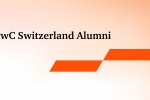Our report «Global Top 100 Companies 2020 – June Update» lists the global ranking of the top 100 public companies by market capitalisation. After the disruptive first quarter, most companies could recover their losses. But volatility remains elevated, and the second quarter of 2020 showed amazing winners and clear losers.
PwC has updated the annual «Global Top 100 Companies 2020» report to summarise and analyse more recent developments in the second quarter. In order to regularly reflect the current conditions of economic uncertainty, there will be quarterly updates to the original report released in May 2020 for the foreseeable future. The most important finding in a nutshell: the market capitalisation of the Global Top 100 as of June 2020 was only 1% behind that of December 2019.
Strong recovery in the second quarter of 2020
At the end of June 2020, the combined valuation of the Global Top 100 companies amounted to $25 trillion, after $21.5 trillion at the end of March, and $25.4 trillion at the end of December 2019. This represents an increase of 17% in the second quarter – after decreasing by 15% in the first three months of 2020 as Covid-19 took hold – and mirrors the overall strong performance of equity markets from April to June. The MSCI World Index, by comparison, was 7% behind its December notation at the end of June, having lost 21% in the first quarter before bouncing back 19% in the second quarter. The Global 100 therefore clearly outperform the broad index, a trend that has been observed for quite some time.
However, this recovery was not equally strong in all parts of the world. While Global Top 100 companies from the US and Greater China ended the first half of 2020 in the green, Europe and the rest of the world were still down 3% and 4% respectively. China and its regions benefitted from being further advanced in Covid-19 recovery, along with a strong technology and e-commerce component. A glance at these sectors reveals that the concentration of technology and consumer services companies in the Global Top 100 is a key driver for outperforming the wider market index.
The winners and the losers
Eighty-seven of the Global Top 100 companies saw an increase in their market prices from April to June 2020, compared with ten from January to March. The top five are still the top five – Saudi Aramco, Apple, Microsoft, Amazon and Alphabet. Saudi Aramco’s IPO in December 2019 – the largest IPO ever – had catapulted the company directly to the top, disrupting the longstanding dominance of the US tech giants. As of March 2020, the market capitalisation of Saudi Aramco amounted to $1.6 trillion, relegating Microsoft and Apple to second and third place, respectively, with valuations of $1.2 trillion and $1.1 trillion.
Saudi Aramco could maintain its leading position in the second quarter (+$139bn), but suffered from the prevailing oil price outlook. Apple and Microsoft saw valuation increases of $469bn (42%) and $344bn (29%), respectively, closing the gap with Saudi Aramco. Amazon became the fourth public company with a market capitalisation of more than $1 trillion as of June 2020. Alphabet was close ($966bn) and has since moved above the $1 trillion mark. In terms of price appreciation, Pinduoduo (+148%), Tesla (+104%) and PayPal (+80%) were leading the pack.
And the losers? Not surprisingly, six out of the ten companies with the largest decreases in market capitalisation were in either the oil & gas or financial sectors. Ten companies have dropped out and did not qualify for the June 2020 list. They were replaced by the returning Boeing, BHP and Softbank and by newcomers Pinduoduo, Meituan Dianping, Shopify, T-Mobile US (having acquired Sprint in April), Qualcomm, Keyence Corporation and Lowe's Companies.
Last, but not least, Switzerland, with its three heavyweights, continues to be a big player in the Global Top 100. While Novartis dropped from 25th to 29th place, giving way to Nvidia, Kweichow Moutai, Home Depot and LVMH, Nestlé (13) and Roche (14) held their positions in the top 20.
Key findings
- The market capitalisation of the Global Top 100 as of June 2020 was only 1% behind that of December 2019
- From April to June, the Global Top 100 market capitalisation climbed by 17%, after decreasing by 15% in Q1 2020
- The concentration of technology and consumer services companies in the Global Top 100 is a key driver for outperforming the wider market index
- Global Top 100 companies from the US and Greater China recovered their first quarter losses by the end of June; Europe and the rest of the world were still in negative territory
- Eighty-seven of the Global Top 100 companies saw an increase in market capitalisation from March to June 2020, compared with ten from January to March
- Saudi Aramco still holds the top spot, but the US tech giants were narrowing the gap
- Six out of the ten companies with the largest decreases in market capitalisation were in either the oil & gas or financial sectors
- Nestlé, Roche and Novartis remain in the top 25






